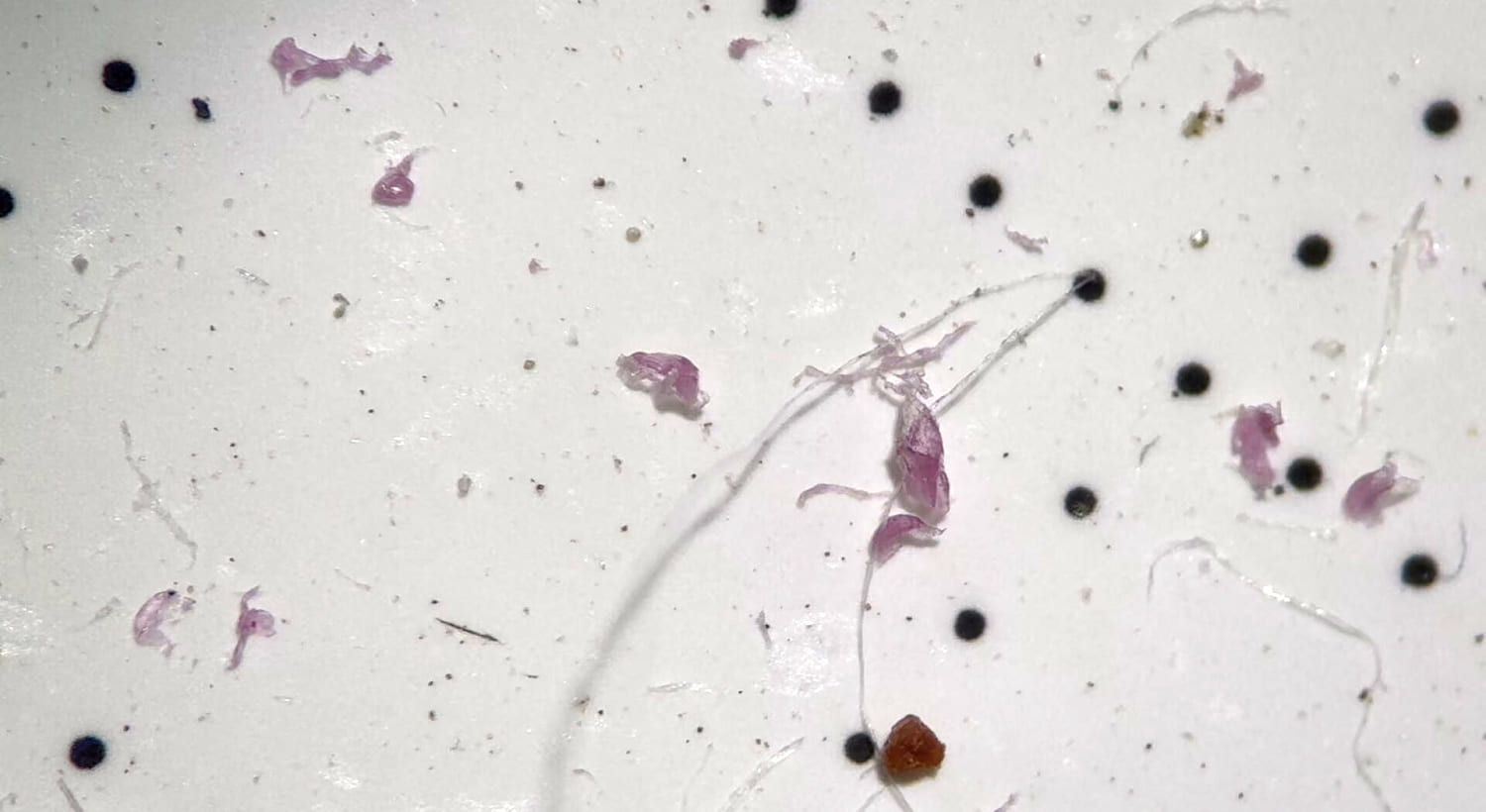Share this @internewscast.com

When Fulfer put hot pasta in a black plastic takeout container and followed the same procedure, she again saw microplastics under the microscope. Even more came off the container and leached into the pasta when she microwaved it in the same vessel.
“Mostly, when a container says ‘microwave safe,’ it means it’s safe for the container to be in the microwave — it’s not going to melt,” said Fulfer. “But that doesn’t mean that it’s safe for you as a person, because microwaving plastic particularly changes the chemical bonds — they make them more weak. And that allows any chemicals that are in those plastics, and also nanoplastics, to leach from that container into the food that you’re heating up.”
A recent study at the University of Nebraska found heating a plastic container in the microwave caused more microplastics and nanoplastics to leach into food than refrigerating the container or keeping it at room temperature.
The problem isn’t just with single-use containers that are meant to be thrown out — already a major source of plastic pollution worldwide. Fulfer also found microplastics when she microwaved peas in a plastic container that was designed to be reusable.
Even products people might not think of as plastic can shed microplastics, Fulfer has found. When she microwaved hot water in a paper cup with a laminated interior, stirred it briefly, filtered it and ran an analysis using lasers, she found polyethylene fragments, a type of microplastic.
Other researchers have even flagged chewing gum as a potential culprit, with one very small study finding a single piece could release hundreds to thousands of microplastics into saliva.
Researchers say the plastic in our food and drinks is likely to be building up in our bodies.
In a study published this year, researchers with University of New Mexico Health Sciences found “alarmingly high” levels of microplastics in human brains. There appeared to be more in people with dementia, though scientists don’t know whether more plastic actually caused those symptoms. A separate study published last year by a group of Italian researchers found people with microplastics in the plaque in their arteries had a higher risk of heart attack, stroke or death — though that finding also doesn’t prove a direct cause.
Plastic producers insist their products are safe and say there are few materials that can rival plastics for versatility, cost and convenience.
“There is nothing more important to our industry than safe products and materials,” said Plastics Industry Association President and CEO Matt Seaholm. “These materials are not only safe but also essential to our daily lives — keeping food fresh, ensuring medical supplies remain sterile, and enhancing overall quality of life.”
Trasande said consumers don’t need to cut out all plastics but recommended using them less. “We need to take the safe and simple steps now to reduce our plastic footprint,” he said.
That could involve switching to more glass or stainless steel containers, or swapping out plastic cutting boards with wooden ones. For heating food and drinks up in the microwave, glass or ceramic might be a better option.
“We’re talking about very low-dose exposures that have serious impacts,” Trasande said. “Changing those exposures, even in that very low range, can have huge benefits.”

















